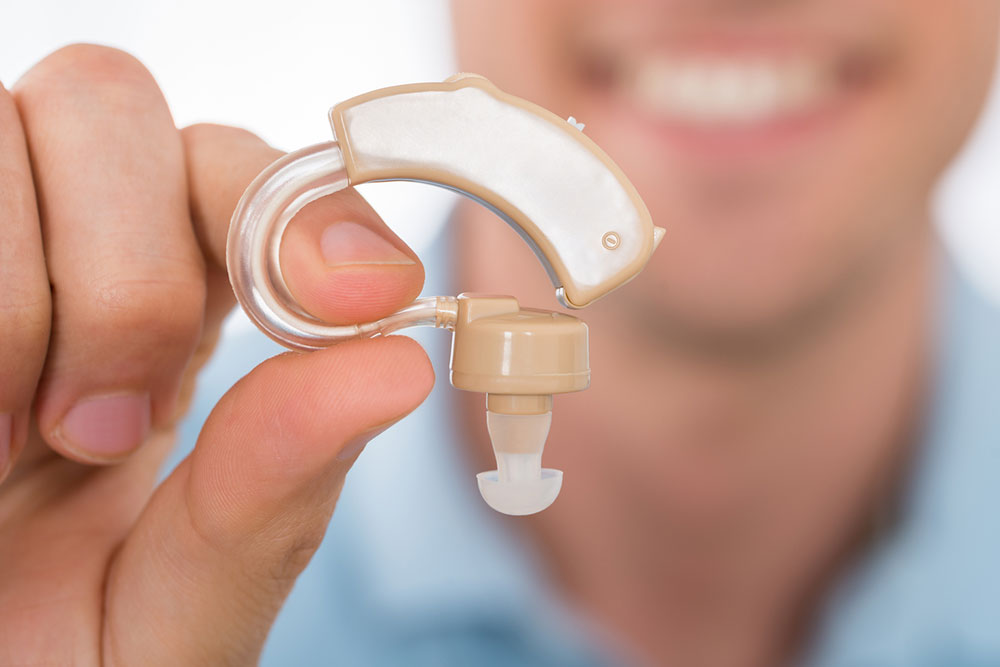
5 common mistakes new hearing aid owners must avoid
Hearing aids are designed to enhance hearing by amplifying sounds, making them audible to a person with hearing loss. These are accessibility devices that improve one’s quality of life with minimal difficulties. However, first-time users of hearing aids may have a hard time adjusting to the device. They may end up making certain mistakes, which negatively impact their experience of using hearing aids. However, most of these common mistakes are easily avoidable.
Here are some common mistakes new hearing aid owners make and how to avoid them.
Not wearing the hearing aids for enough time
One may often feel strange or uncomfortable when they start wearing hearing aids for the first time. This is because it takes some time to adjust to having a device in the ears throughout the day. So, many first-time users tend to take out the hearing aids after wearing them only for a couple of hours. Then, they do not wear the devices for the rest of the day. Doing this may make one feel comfortable, but it will be detrimental to the progress of adapting to the hearing aids. The devices are meant to improve hearing. If one doesn’t wear them all the time, it will become difficult to get the most out of hearing aids.
To avoid this mistake, one can start by wearing hearing aids for a couple of hours. Then, take them out for a few minutes to take a break and insert them again. Over time, increase the duration of wearing the devices from two to eight hours and decrease the break times. This way, one will become more comfortable with having the aids inside their ear.
Not learning how to use the hearing aids properly
A common mistake many new hearing aid owners make is not learning how to use the devices properly. They usually start using the aids right out of the box. This mistake can be easily avoided by taking some time to learn the basics of how hearing aids work. One needs to acquaint themselves with the various features and benefits of the model they have chosen. Simply wearing the devices without knowing how to use them well means one will not get the best out of their hearing aids. For instance, one may not be aware if their aids have helpful features such as noise filters or Bluetooth. So, they will be unable to take advantage of these features and improve the experience of using the aid efficiently.
Therefore, one must dedicate some time to go through the user manuals that come with the device. In addition, one can do their research online or consult an audiologist regarding how they can use their hearing aids properly.
Not cleaning or maintaining the hearing aids
For new hearing aid owners, it may be difficult to remember to clean their hearing aids while they are still adjusting to using them. Hearing aids are highly sensitive devices. Dust, ear wax, sweat, debris, or grit may accumulate on them due to prolonged use. All of these can affect the performance of the device. Also, when not cleaned regularly, hearing aids may not last longer. They may become damaged or start to malfunction too.
Therefore, it is important to ensure that the devices are cleaned regularly. One can ask their audiologist how frequently the aids should be cleaned. In the initial days of use, reminders can be set on smartphones, sticky notes on the fridge, or one’s to-do lists to remember when to clean the aids. Most hearing aids come with a cleaning kit, which can be used along with soft cloths or tissues to clean the devices thoroughly. In addition, the devices must be safely stored in the case provided when they are not in use. This will protect them from dust and other substances that may cause damage.
Not making adjustments to the hearing aids
All hearing aids come with adjustment settings. This is because every person has different requirements while using the aids. So, different sets of adjustments work for different people. Therefore, it would be a mistake to continue wearing the aids in the same settings that they came with in the box. One may find the preset adjustments uncomfortable. Moreover, they are not taking complete advantage of the different adjustment settings that their hearing aids are capable of.
An easy way to rectify this mistake is to play around with the different adjustment settings during the initial days. This must be done after one has thoroughly acquainted themselves with the hearing aids by reading the manual and documentation. Since every person has a unique type and level of hearing loss and is in different environments, it is crucial to adjust the settings according to one’s requirements. One can also consult their audiologist to figure out the correct settings. This will help customize the aids based on one’s needs.
Not wearing hearing aids in different environments
Due to the difficulty in adjusting to hearing aids, many new users are reluctant to wear them everywhere, particularly while heading out. Some only stick to the aids when they are home or indoors. However, daily life involves moving through environments with different sound and noise levels. So, it would be a mistake to avoid wearing hearing aids in different settings. One should try to experience how it feels like wearing hearing aids at home as well as in a noisy environment such as the mall, airport, or restaurant. This will help determine whether adjustments are required to be made to the devices based on the noise levels. Further, it will help understand whether the hearing aids function properly in different situations and make one get used to wearing the devices in spaces beyond their comfort zone.


